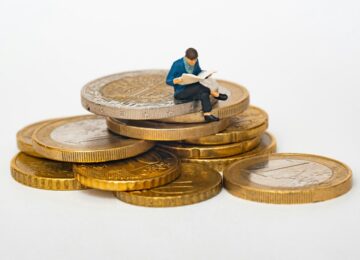UK Prime Minister Rishi Sunak recently said that poor math skills in adults were holding back his country’s economy and that students without a robust foundation in mathematics would be left behind in the working world. He lamented that an “anti-maths mindset” had made Britain one of the least numerate nations in the developed world.
These are very strong words and apply to many nations. How does one reverse this trend? The passion for teaching and learning mathematics must return. But how?
Meditation, stories help in learning mathematics
The answer is devising motivating approaches. We need interesting and innovative approaches to help students develop an interest in and better understand the subject.
What can be more innovative than incorporating stories, symbols, meditation, and problem-solving into the teaching lessons?
This is some food for thought for you, Mr. Prime Minister
Learning mathematics requires a clear and focused mind. Meditation and mindfulness help with this.
Why cannot we introduce a short meditation or mindfulness practice at the start of each math lesson to help students clear their minds and focus on the task at hand?
Why not rely on ancient wisdom, such as incorporating stories from ancient texts? Storytelling is the best teaching pedagogy.
If infinity were to be explained, the story of the ancient Greek mathematician Zeno, who lived in the 5th century BCE, would be helpful. His Dichotomy Paradox, Achilles, and the Tortoise Paradox are very useful in teaching concepts like time, motion, infinity, and the nature of reality.
The Dichotomy Paradox states that to travel any distance, we must first travel half of that distance, then half of the remaining distance, and so on, ad infinitum. This implies that we can never actually travel any distance, as there will always be an infinite number of smaller distances that must be traversed first. That is infinity for you.
Understanding concepts and strengthening the basics through yoga and ancient Hindu philosophy
Similarly, many concepts can be taught through symbols and geometry.
For example, the ancient Egyptians used hieroglyphs, a combination of pictures, symbols, and abstract shapes, to represent numbers and ideas, while the ancient Greeks used geometric shapes to represent numbers and mathematical concepts.
Problem-solving methods are another method that can be used.
Several have used the ancient Chinese “finger counting” method called “chisenbop” to solve some complex mathematical problems. In this method, fingers on one or both hands represent numbers from 1 to 10. Each finger is assigned a numerical value, with the thumb representing 1 and the little finger representing 10.
The fingers on both hands are combined to represent numbers larger than 10. For example, to represent ‘12’, the thumb on the left hand is held down to represent 10, while the index finger on the right hand is held down to represent 2.
To perform arithmetic operations using ‘chisenbop’, the fingers on one or both hands are manipulated in a certain way to represent the numbers being added, subtracted, multiplied, or divided. This method is a fun and engaging way to introduce young children to the world of mathematics.
Hindu ancient wisdom too contains many mathematical concepts and methods that can be used to simplify and teach mathematics.
The Rig Veda cites 16 sutras or aphorisms and 13 sub-sutras, which provide techniques for mental calculation and simplifying complex mathematical problems.
They can be used to teach arithmetic, algebra, and geometry and can help simplify many mathematical concepts. Assuming the 10th root of 1.5 is to be found, one can use the’ Nikhilam Navatas-karamam Dashatah’ sutra, which translates to ‘All from 9 and the last from 10.’
Subtract 1 from the number, which gives 0.5. Then multiply the result by 10, which gives 5. Apply the sutra by subtracting each digit of the result (5) from 9, then place the final digit (0) at the end, giving 4 as the first digit of the 10th root.
Repeat the process for the remaining digits, starting with the second digit after the decimal point. The result is 1.2214. The rule can be used to perform even complex multiplications and divisions.
Many geometric shapes and patterns used in Hindu philosophy are closely related to mathematical concepts such as symmetry, proportion, and tessellation. They can be used to teach these concepts visually and intuitively.
Geometric shapes used in ‘yoga asanas’ or postures are based on mathematical principles such as symmetry and proportion.
By teaching yoga alongside mathematics, students can gain a deeper understanding of mathematical concepts and develop a greater appreciation for the inter and multi-disciplinary nature of different fields of knowledge.
As far as storytelling is concerned, many Indian epics can be cited.
The famous battle of ‘Kurukshetra’ involved using various weapons and battle formations, which required complex mathematical calculations.
Even ‘Arthashastra’ describes battle formations in simple math language.
Lord Rama and his army constructed the bridge to Lanka using geometric calculations and principles such as proportion and symmetry.
The Bhagavata Purana describes the use of the decimal system and the concept of zero in ancient India.
In Panchatntra, the story of ‘The Lion and the Hare’ involves a mathematical puzzle in which the hare uses his knowledge of geometry to outsmart the lion.
Incorporate the fun element and remove the mental block
Mathematics cannot be learnt if the fun element is lost. Using games, puzzles, and other interactive activities to help children see the relevance of mathematics to their everyday lives, or giving children opportunities to explore and experiment with mathematical concepts and ideas rather than simply memorising formulas and equations or recognising and rewarding them for their efforts and achievements in mathematics, providing positive feedback and encouragement to help them build confidence and self-esteem are all important.
Technology, such as apps, interactive whiteboards, and online resources to make learning mathematics more interactive and engaging, is this decade’s gift and must be used extensively.
Removing fear and anxiety towards math learning and fostering creativity and curiosity will make math more exciting and engaging.
We sympathise with you, Mr Prime Minister, and (we) echo what Albert Einstein, the German theoretical physicist, said. “Pure mathematics is, in its way, the poetry of logical ideas”.
It is time the British Schools, too, adopted a little wisdom that comes free here.
(The author is a former Chairman of AICTE, Ashok Thakur, and Former Secretary of the Education Government of India.)


































